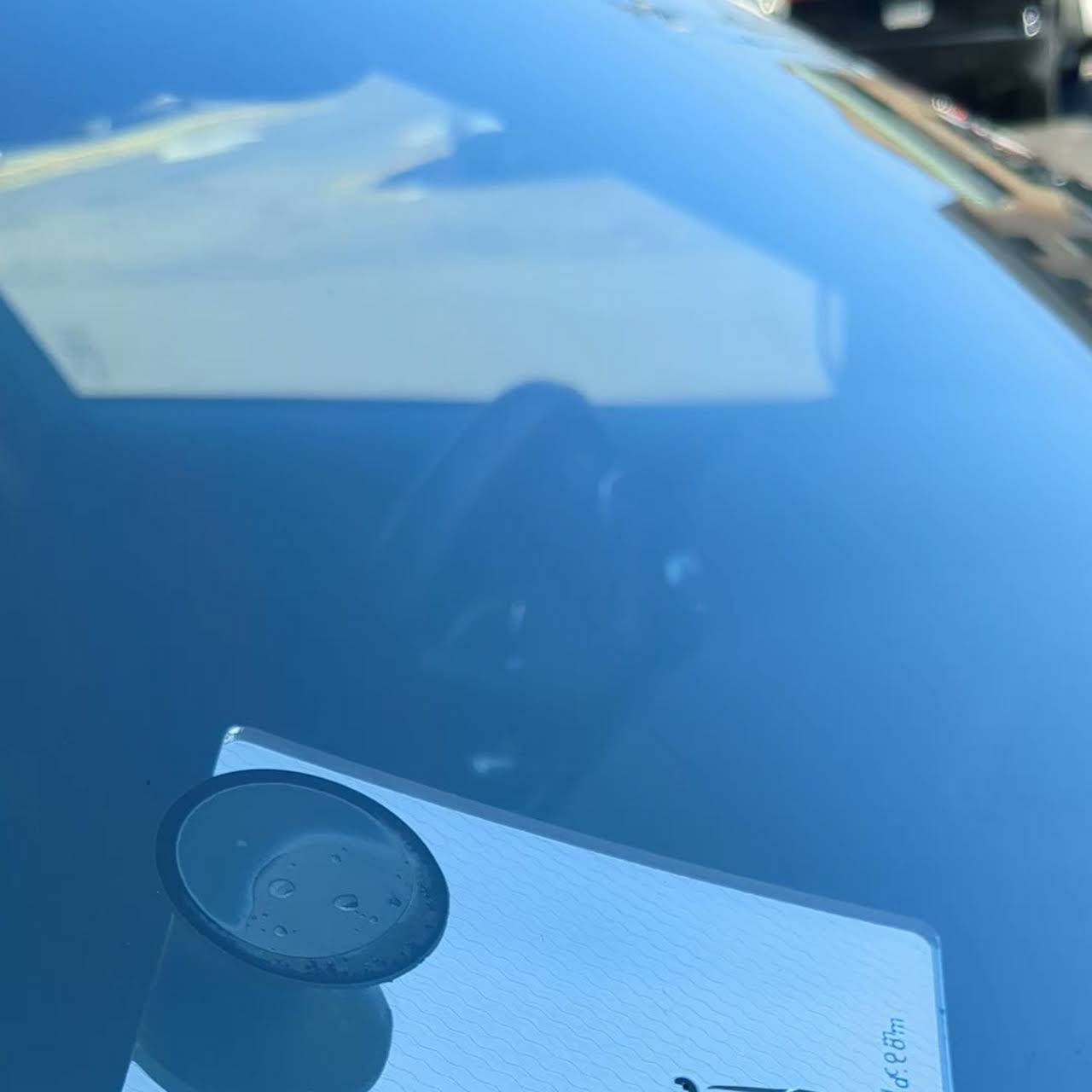Car Window Keeps Falling Down: Causes, Fixes, and Prevention
Introduction
Few things can be as frustrating for car owners as a car window that keeps falling down unexpectedly. Whether you're dealing with an older vehicle or a newer one, this issue can be a major inconvenience and a security risk. In this comprehensive guide, we'll explore the common causes behind car windows that won't stay up, the DIY fixes you can attempt, and when it's best to seek professional help. We'll also discuss preventive measures to keep your car windows functioning smoothly.

Chapter 1: Understanding the Anatomy of Car Windows
In this chapter, we'll provide an overview of the components involved in car windows:
1.1 Power Windows vs. Manual Windows
-
Power Windows: Most modern vehicles are equipped with power windows that are controlled electronically.
-
Manual Windows: Older vehicles may have manual windows that are operated by hand-crank mechanisms.
1.2 Components*
-
Window Regulator: This is the mechanism responsible for moving the window up and down. It's connected to the window motor in power windows.
-
Window Motor: Found in power windows, the motor provides the necessary force to operate the window.
-
Window Glass: The actual glass pane that moves within the door frame.
Chapter 2: Common Causes of Car Windows Falling Down
In this chapter, we'll explore the various reasons why car windows may suddenly drop:
2.1 Worn or Broken Window Regulator*
-
Friction and Wear: Over time, the window regulator's moving parts can wear out, leading to decreased friction and a weakened grip on the window.
-
Damage: Physical damage or excessive force applied to the window can cause the regulator to break or become misaligned.
2.2 Failed Window Motor*
-
Motor Burnout: In power windows, the motor may burn out due to heavy use or electrical issues.
-
Wiring Problems: Faulty wiring can also disrupt the motor's operation.
2.3 Window Track and Guides Issues*
-
Obstructions: Debris or foreign objects in the window track can prevent the window from moving smoothly.
-
Lubrication Problems: Lack of proper lubrication in the window track and guides can result in increased friction and damage.
2.4 Window Glass Detachment*
-
Adhesive Failure: In some cases, the adhesive holding the window glass to the regulator may fail, causing detachment.
-
Worn-Out Attachments: The mechanisms that secure the glass to the regulator can wear out.
Chapter 3: DIY Fixes for a Car Window That Won't Stay Up
This chapter explores some DIY solutions you can try if your car window keeps falling down:
3.1 Manual Window Adjustment*
- Crank Mechanism: For manual windows, check if the crank mechanism is loose or damaged. Tighten or replace it if necessary.
3.2 Power Window Reset*
- Reset Procedure: Some power windows have a reset procedure that involves holding the window switch in a certain position. Refer to your vehicle's manual for instructions.
3.3 Lubrication*
- Lubricate the Window Track: Apply a silicone-based lubricant to the window track and guides to reduce friction.
3.4 Regulator Replacement*
- DIY Replacement: If you're mechanically inclined, you can attempt to replace the window regulator yourself. Be sure to follow step-by-step instructions and safety precautions.
Chapter 4: When to Seek Professional Help
This chapter provides guidance on when it's best to enlist the help of a professional:
4.1 Safety Concerns*
- Safety First: If the window poses a safety risk, such as not staying up while driving, seek professional help immediately.
4.2 Electrical Issues*
- Complex Electrical Systems: Power window problems related to wiring or the motor may require specialized diagnostic equipment and expertise.
4.3 Inexperienced DIY Attempts*
- Preventing Further Damage: If your initial DIY attempts don't resolve the issue or risk causing more harm, consult a professional.
Chapter 5: Preventive Maintenance for Car Windows
In this chapter, we discuss steps you can take to prevent future issues with your car windows:
5.1 Regular Cleaning*
- Window Tracks: Clean the window tracks and guides periodically to remove dirt and debris.
5.2 Lubrication*
- Scheduled Lubrication: Follow the manufacturer's recommendations for lubricating the window components.
5.3 Gentle Operation*
- Avoid Excessive Force: When using power windows, avoid applying excessive force on the window switch, as it can strain the motor and regulator.
5.4 Address Issues Promptly*
- Early Intervention: If you notice any unusual noises or resistance when operating your car windows, address the issue promptly to prevent further damage.
Chapter 6: Costs Associated with Window Repairs
Chapter 6 explores the potential costs you might incur when dealing with window repair:
6.1 DIY Cost*
- Affordable: DIY fixes are often the most cost-effective option, requiring only the purchase of replacement parts or lubricants.
6.2 Professional Repairs*
-
Labor Costs: When seeking professional help, you'll need to budget for labor costs in addition to parts and materials.
-
Window Regulator Replacement: The cost of replacing a window regulator can vary based on the make and model of your vehicle.
Chapter 7: Final Thoughts on Car Windows That Won't Stay Up
Chapter 7 offers concluding remarks and advice on dealing with car windows that keep falling down:
7.1 Safety and Comfort*
- Priority: Ensuring the proper functioning of your car windows is essential for your safety and comfort while driving.
7.2 Proactive Maintenance*
- Regular Checks: Incorporate window maintenance into your vehicle's routine checks to catch issues early.
7.3 Professional Assistance*
- Expert Guidance: Don't hesitate to seek professional help if you're uncertain about DIY repairs or if the problem persists.
Chapter 8: Additional Maintenance Tips for Car Windows
Chapter 8 delves deeper into maintenance tips and best practices for keeping your car windows in excellent condition:
8.1 Weatherstripping Inspection
-
Sealing Integrity: Regularly inspect the weatherstripping around your car windows. Damaged or worn weatherstripping can lead to water leaks and drafts.
-
Replacement: If you notice any signs of wear or damage, consider replacing the weatherstripping to maintain a tight seal.
8.2 Window Tint Considerations
-
Tint Preservation: If your car windows have tinted film, be cautious when cleaning them. Use mild cleaning solutions and non-abrasive materials to avoid damaging the tint.
-
Tint Maintenance: Periodically inspect the tint for bubbles, peeling, or discoloration. Address any issues promptly to ensure the tint remains intact and functional.
8.3 Regular Lubrication Schedule
-
Lubrication Routine: Establish a regular lubrication schedule for your car's window components, following the manufacturer's recommendations.
-
Appropriate Lubricants: Use recommended lubricants to ensure smooth window operation and minimize wear on the regulator and tracks.
Chapter 9: The Role of Electrical Systems in Power Windows
Chapter 9 explores the intricate electrical systems involved in power windows and how they can impact window functionality:
9.1 Fuse Inspection
-
Fuse Functionality: In power window systems, a blown fuse can cause window failure. Learn how to check and replace fuses to troubleshoot electrical issues.
-
Wiring Inspection: Inspect the window wiring for signs of damage or wear, as damaged wiring can disrupt the electrical connection.
9.2 Window Switch and Control Module
-
Control Mechanisms: Understand how the window switch and control module work together to send electrical signals to the window motor and regulator.
-
Diagnosis and Repairs: Learn about common issues with window switches and control modules and how to diagnose and replace them when necessary.
Chapter 10: Exploring Advanced Window Technologies
Chapter 10 delves into advanced window technologies and features found in modern vehicles:
10.1 One-Touch Auto-Up and Auto-Down Functions
- Convenience Features: Many modern cars offer one-touch auto-up and auto-down functions for driver and sometimes passenger windows. Understand how these features work and troubleshoot common problems.
10.2 Smart Windows*
-
Intelligent Glass: Learn about the emergence of smart windows that can change opacity or have built-in technology like defogging capabilities.
-
Maintenance: Understand the unique maintenance requirements and considerations for smart windows to ensure they function correctly.
10.3 Safety Sensors*
-
Safety Features: Explore how safety sensors, such as anti-pinch sensors, are integrated into power windows to prevent injuries or obstructions from interfering with window operation.
-
Calibration and Maintenance: Understand the importance of sensor calibration and how to maintain these safety features.
In conclusion, maintaining your car windows and understanding their complex mechanisms, whether manual or power-operated, is essential for ensuring your safety and comfort on the road. By following these detailed maintenance tips and being aware of advanced window technologies, you can keep your car windows in optimal condition and avoid common issues that may arise.



